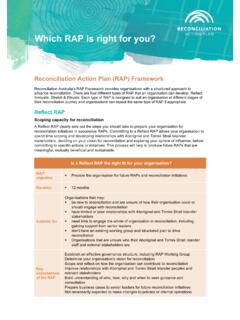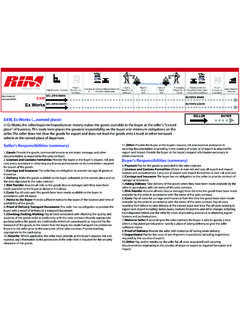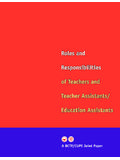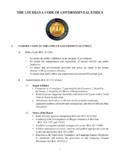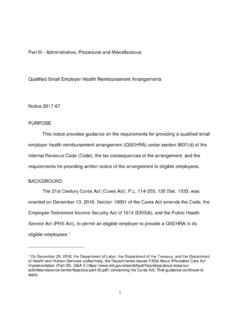Transcription of THE STATE OF RECONCILIATION
1 THE STATE OF RECONCILIATION IN AUSTRALIAOUR HISTORY, OUR STORY, OUR FUTURESUMMARYbISBN 978-0-9945103-2-7 (Print) ISBN 978-0-9945103-1-0 (Online) RECONCILIATION Australia1 THE STATE OF RECONCILIATION IN AUSTRALIAOUR HISTORY, OUR STORY, OUR FUTURET wenty-five years after the establishment of the Council for Aboriginal RECONCILIATION (CAR), this report examines the STATE of RECONCILIATION in Australia today. The report uses a five dimensional framework of RECONCILIATION to measure and analyse Australia s progress over this time and set out a roadmap for a reconciled Australia. The intention is to spark a renewed national conversation about how, over the next 25 years, we can move towards becoming a reconciled, just and equitable STATE OF RECONCILIATION IN AUSTRALIAFOREWORD PATRICK DODSONC hairperson Council for Aboriginal RECONCILIATION 1991 1998 Co-Chairperson Referendum Council on constitutional recognition of Aboriginal and Torres Strait Islander peopleThis STATE of RECONCILIATION in Australia report, celebrating a quarter of a century of formal RECONCILIATION and the work of the Council for Aboriginal RECONCILIATION , is timely.
2 At a time when the Australian people are considering changes to incorporate Indigenous people in the nation s Constitution, this Report makes an important contribution to the national conversation about modern Australia s potential to reconcile fundamental and unresolved wounds that diminish Australia s collective sense of report weaves 25 years of modern Australian history into a compelling narrative and injects sharp and insightful commentary and analysis about how far we have come as a nation, and the continued challenges that we face on the RECONCILIATION journey. The Report brings the STATE of RECONCILIATION into sharp focus achievements, challenges, disappointments and work that must continue. Disturbingly, the Report reveals the schism between Indigenous and non-Indigenous Australia s understanding and perspectives of how our nation s history has shaped the contemporary circumstances of Indigenous communities, and their relationship with the Australian STATE . There is a discernible lack of appreciation by settler Australia about the grievances and sense of historical injustice that Indigenous people feel.
3 This must be addressed for Australia to be that schism is the RECONCILIATION movement s greatest challenge. Part of that challenge is defining the concept itself RECONCILIATION has come to mean different things to different people. This lack of clarity and lack of national unified purpose has been embedded in the RECONCILIATION journey throughout Australia s history. If this journey was easy, RECONCILIATION would not have promoted a political movement. There are powerful forces within Australia that do not agree that our nation needs to be reconciled. There are those who say that attention on past injustice encourages historic wounds to fester, creating a culture of victimhood; and that modern Australia has no responsibility for past government policies and are formidable forces within the fabric of Australian society and they have led the work of RECONCILIATION onto the battlefields of Australian politics. That famous handshake 25 years ago by the then Minister for Indigenous Affairs and his Opposition counterpart, symbolising a bipartisan commitment to the statutory Aboriginal RECONCILIATION process, became tarnished by a political battle over the very matters that the process sought to address.
4 The recognition of native title by the Australian High Court in 1992, and its accompanying extinguishment of the insidious terra nullius doctrine, and the Australian Human Rights Commission s 1997 report into the Stolen Generations, presented urgent legal and moral challenges to the Australian nation. The statutory RECONCILIATION process provided a potential framework to accommodate these nationhood fractures into a broader national settlement, treaty or compact. These matters helped turn the work of the Council for Aboriginal RECONCILIATION into a people s movement, culminating in hundreds of thousands of Australians walking across famous, and not so famous, bridges in cities and towns throughout Australia in symbolic acts of commitment for a reconciled , these matters also provoked a political backlash where RECONCILIATION was redefined by those with political power to mean improved services and economic participation for Indigenous people RECONCILIATION on settler Australia s terms.
5 Ideological battles ensued; where RECONCILIATION provided a backdrop in a contrived culture war; where the collective rights of Indigenous people were pitted against the rights and responsibilities of individuals; and where Indigenous traditional rights were framed as symbolic aspirations, as opposed to the practical outcomes of public investment in education, employment and housing. Cries for a national apology to the Stolen Generations became a divisive political issue, and when it finally came, it was greeted with a sense of national acclamation, but also an edge of political partisan must transcend Australian political theatre and promote a sense of national unity. All Australians should feel, as a nation, connected to the tens of thousands of years of human occupation of the Australian continent and surrounding Islands. RECONCILIATION Australia has produced a highly relevant report, exploring the STATE of RECONCILIATION at a critical point in Australia s history. The Report is robust, and while it does not shirk from the challenges facing Australian RECONCILIATION , it provides ample evidence of significant achievements and widespread community goodwill over the past 25 years a necessary platform from which to imagine a reconciled nation in the 1: KEY EVENTS IN AUSTRALIA S RECONCILIATION HISTORY1932 William Cooper establishes the Australian Aborigines League.
6 During the 1930s, Mr Cooper and other leaders of the Aborigines Progressive Association gathered 1,814 signatures on a petition calling on Prime Minister Joseph Lyons and King George VI to intervene for the preservation of our race from extinction and to grant representation to our race in the Federal Parliament .1938 The Aborigines Progressive Association and the Australian Aborigines League declare 26 January a day of mourning for Aboriginal people. 1963 Yolngu leaders present the Yirrkala bark petitions to the Australian Parliament, protesting against the seizure of more than 300 square kilometres of Aboriginal land in Arnhem Land for of Sydney students, including Charlie Perkins, launch the Freedom Rides, travelling around NSW by bus to draw attention to discrimination against Aboriginal people. 1966 Aboriginal stockmen and their families stage the Wave Hill station walk-off to protest against poor working conditions. The Gurindji peoples struggle later develops into Australia s first successful Aboriginal land a national referendum, per cent of Australians vote yes to give the Commonwealth Government the power to legislate for Aboriginal people and to include Aboriginal people in the Gove land rights case, while denying recognition of native title, sets the intellectual framework for recognising land Thomas Bonner becomes the first Aboriginal parliamentarian following his election as Senator for Aboriginal Tent Embassy is established.
7 The Department of Aboriginal Affairs is Woodward Royal Commission into Aboriginal Land Rights is established, paving the way for the Aboriginal Land Rights Act in the Northern Territory. 1975 Australian Parliament passes the Racial Discrimination Act 1975 (Cth).1976 Australian Parliament passes the Aboriginal Land Rights (Northern Territory) Act 1976 (Cth), leading to the establishment of land rights legislation in most Australian states in the 1970s and 1980s. 1988 The Barunga Statement calling for self-management and land rights is presented to Prime Minister Bob Hawke, who indicates his support for a Australian Government establishes the Aboriginal and Torres Strait Islander Commission (ATSIC). Dr Lowitja O Donoghue AC, CBE, DSG is the first chairperson. 1991 The report of the Royal Commission into Aboriginal Deaths in Custody is Council for Aboriginal RECONCILIATION (CAR) is Patrick Dodson is appointed inaugural chairperson1992 The High Court recognises native title in the landmark case Mabo v Queensland (No.)
8 2) (1992).Prime Minister Paul Keating delivers the Redfern Speech recognising the history of dispossession, violence and forced removal of Aboriginal Aboriginal and Torres Strait Islander Social Justice Commissioner position is created. Professor Mick Dodson AM is appointed to the Parliament passes the Native Title Act 1993 (Cth).The first Week of Prayer for RECONCILIATION is held, which later becomes National RECONCILIATION Week1995 The Australian Government officially recognises the Aboriginal and Torres Strait Islander flags. 1996 The first National RECONCILIATION Week is full High Court hands down its decision in Wik Peoples v Queensland (the Wik decision ), in which it determines that pastoral leases do not extinguish native National Inquiry into the Separation of Aboriginal and Torres Strait Islander Children from their Families releases the Bringing them home report. The Australian RECONCILIATION Convention is held in Melbourne. 1998 The Native Title Act 1993 (Cth) is amended based on Prime Minister John Howard s 10-point CAR delivers its final report to Prime Minister John Howard and the Australian Parliament at Corroboree 2000.
9 Bridge walks are held across Australia. RECONCILIATION Australia is established. 2004 ATSIC is Close the Gap campaign for Indigenous health equality is developed following the release of the Social Justice Report Australia s RECONCILIATION Action Plan program begins. 2007 The Northern Territory Emergency Response Council of Australian Governments (COAG) commits to closing the gap in life expectancy between Indigenous and non-Indigenous Australians. 2008 Prime Minister Kevin Rudd delivers the Apology to the Stolen commits $ billion towards Closing the Gap on Indigenous Disadvantage for projects in health, housing, early childhood development, economic participation and remote service indicates its support for the United Nations Declaration on the Rights of Indigenous National Congress of Australia s First Peoples is Expert Panel on Constitutional Recognition of Aboriginal and Torres Strait Islander peoples leads wide-ranging public consultations and delivers its findings in January 2012.
10 2012 The campaign to recognise Aboriginal and Torres Strait Islander peoples in the Constitution Australian Parliament passes the Aboriginal and Torres Strait Islander Peoples Recognition Act 2013 to maintain momentum towards a RECONCILIATION IN AUSTRALIAA ustralia has a long history of RECONCILIATION and countless people Aboriginal, Torres Strait Islander and non Indigenous have dedicated their life s work to the RECONCILIATION movement. As a result, many significant steps have been taken. For Aboriginal and Torres Strait Islander peoples, Australia s colonial history is characterised by devastating land dispossession, violence, and overt and unapologetic racism. Over the last half-century, however, Australia has made some remarkable progress towards national RECONCILIATION (Figure 1). This journey reminds us that RECONCILIATION is a work in progress generations of people have fought hard for meaningful change and future gains are likely to take just as long. In the 25 years since the Council for Aboriginal RECONCILIATION (CAR) was established, the concept of RECONCILIATION has taken a holistic approach that encompasses rights, as well as so-called symbolic and practical actions.
